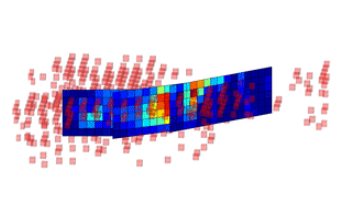From hurricanes and floods to volcanoes and earthquakes, the Earth is continuously evolving in fits and spurts of dramatic activity. Earthquakes and subsequent tsunamis alone have caused massive destruction in the last decade—even over the course of writing this post, there were earthquakes in New Caledonia, Southern California, Iran, and Fiji, just to name a few.
Earthquakes typically occur in sequences: an initial “mainshock” (the event that usually gets the headlines) is often followed by a set of “aftershocks.” Although these aftershocks are usually smaller than the main shock, in some cases, they may significantly hamper recovery efforts. Although the timing and size of aftershocks has been understood and explained by established empirical laws, forecasting the locations of these events has proven more challenging.
We teamed up with machine learning experts at Google to see if we could apply deep learning to explain where aftershocks might occur, and today we’re publishing a paper on our findings. But first, a bit more about how we got here: we started with a database of information on more than 118 major earthquakes from around the world.
Important Note
Content Editors rate, curate and regularly update what we believe are the top 11% of all AI resource and good practice examples and is why our content is rated from 90% to 100%. Content rated less than 90% is excluded from this site. All inclusions are vetted by experienced professionals with graduate level data science degrees.
In the broadest sense, any inclusion of content on this site is not an endorsement or recommendation of any service, product or content that may be discussed, recommended, endorsed or affiliated with the content, company or spokesperson. We are a 501(c)3 nonprofit and receive no website advertising monies or direct or indirect compensation for any content or other information on any of our websites. For more information, visit our TOS.







